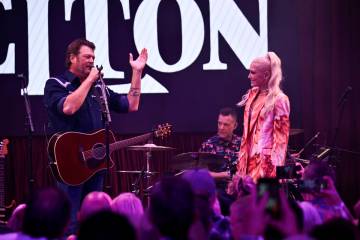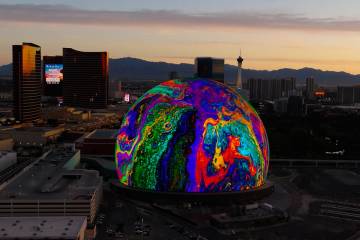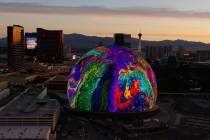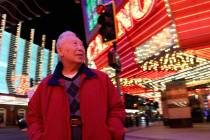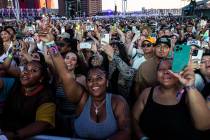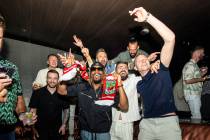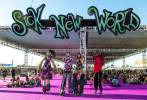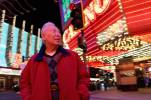Carnival partyers a pretty normal bunch
They just don't make drug users like they used to.
A decade ago, I went to an illegal rave in a warehouse. Hundreds of kids from about 17 to 25 danced as elegantly as rhythmic gymnasts. I'd bet 90 percent of them were rolling on "e" for Ecstasy.
Along the warehouse walls, dozens of other ravers curled in pairs on the floor, tripping on Special K -- the horse tranquilizer ketamine -- or on "H pills" (heroin). Their friends and lovers stroked their hair and faces for comfort.
That was the rave scene -- "The Red Shoes" on the dance floor; "Trainspotting" along the baseboards.
A girl of 21 I knew told me she adored ketamine. She would spread onto her living room carpet, surround herself with water for when she awoke, then pass out on Special K.
"It gives you a near-death experience," she blurted rabidly, recounting worthless visions she gained from being "dead" on it.
Then in 2003, President Bush signed Joe Biden's Rave Act (Reducing Americans' Vulnerability to Ecstasy Act), creating sweeping punishments for anyone operating or housing raves. We dubbed this the "Dirty Dancing Law," the end of good dancing.
It killed raves. Replacing them were nightclubs run by corporates, or by underworld club figures handing money up to corporate leasers.
Ecstasy faded but didn't go away. Users moved on to Adderall, which was not the new Ecstasy but the new cocaine, sort of.
When used correctly by kids diagnosed with attention deficit hyperactivity disorder, the legal drug steadies hyperactivity. But when used by people who do not have ADHD, it acts like coke.
To acquire Adderall, abusers Google the effects of ADHD, tell a loose doctor they suffer the symptoms, and away they skip, Adderall prescription in hand.
At clubs in Vegas, ancillary drugs of choice (besides the main one, alcohol) are coke and Adderall, which people can pour out of prescription bottles and down with vodka-Red Bull.
I've never seen coke or Adderall in a Vegas club. But I don't seek them. I occasionally hear about users. If you're not a druggie, you can't readily discern if a clubber is speeding or if they're just happy to be crazed in Vegas.
Ecstasy (now also known as "molly" in another form) is passe and here's proof: Almost no one dances worth a damn. The most energetic clubbers stand in front of DJ booths, jumping, pumping fists.
So along came last weekend's Electric Daisy Carnival at the Las Vegas Motor Speedway.
EDC was not a rave. It was legal; organizers hired 1,000 security guards and 160 cops; there were corporate sponsors.
Police and the media regularly inquired into possible Ecstasy use, in a way they are not similarly concerned about country music festivals at which men wear Coors Light hats made of empty Coors Light 12 packs.
At various times during the Daisy fest, 50 percent to 80 percent of each night's 80,000-plus people looked to be between 18 and 22. You had to be 18 to get in. This means the bulk of kids saw DJ action they don't have access to at 21-and-older nightclubs.
Security guards frisked kids on their way in and emptied their pockets. But they didn't check crotches or secret compartments in shoes. (Some companies sell shoes featuring hidden pockets.)
Pot was plentiful. But considering hundreds of thousands of tickets were sold, mere scores of arrests and hospitalizations seemed relatively lightweight.
I walked and walked the grounds Saturday and Sunday nights. Kids didn't fetishize drugs openly. They fetishized clothes -- they wore Halloween-contest worthy costumes, or bra-and-frilly-underwear as bikinis.
Overall, I spotted a dozen or so kids who were obviously rolling and were Ecstasy-underweight, twirling in circles, panting.
Realistically, I suppose maybe 10 percent to 20 percent were altered via weed, alcohol, Adderall, Ecstasy, acid or whatever remains.
Everyone else just looked like ... people who enjoy good music. Not drinking. Not smoking. Not truly dancing. They faced DJ stages, screamed, jumped, fist-pumped, made out, or presented blase faces to look cool. And there was little talking.
That's not to say they weren't excited. Each night, they rushed to stages to cheer 45 DJs on six stages in 10 hours.
But there was a clarity in their eyes, actions and attitudes, clearly not the traits of players in drug culture.
Frankly, most kids didn't have the malnourished skeletons of Ecstasy or speed freaks. They were too normal looking, too customarily pleasant, too regular.
If "customarily pleasant" is the fundamental thing to be observed about tens of thousands of people partying at 4 in the morning, I think you, society, should take that and run with it.
Doug Elfman's column appears Tuesdays, Thursdays and Fridays. Contact him at delfman@reviewjournal.com. He blogs at reviewjournal.com/elfman.
Electric Daisy Carnival




